#yongles
Explore tagged Tumblr posts
Text

“RITUAL FLAYING KNIFE” | C. 1407–10 SINO-TIBETAN | DERGE SCHOOL | YONGLE PERIOD [iron alloy with gold and silver inlay | H: 6 7/8”]
Ceremonial weaponry was used in tantric rituals to combat obstacles to enlightenment, such as ignorance and uncontrolled passions.
366 notes
·
View notes
Text
[Hanfu · 漢服]Chinese Historical immortal Hanfu Based On Yuan Dynasty Taoist Temple Mural<永乐宫/Yongle Palace>
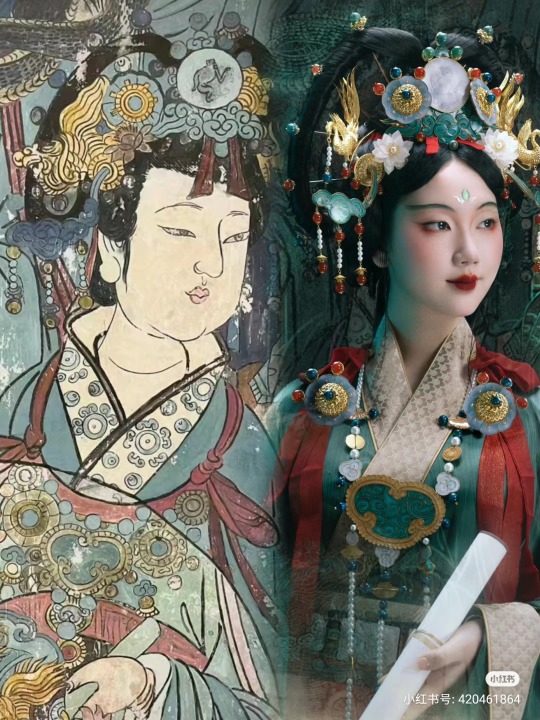
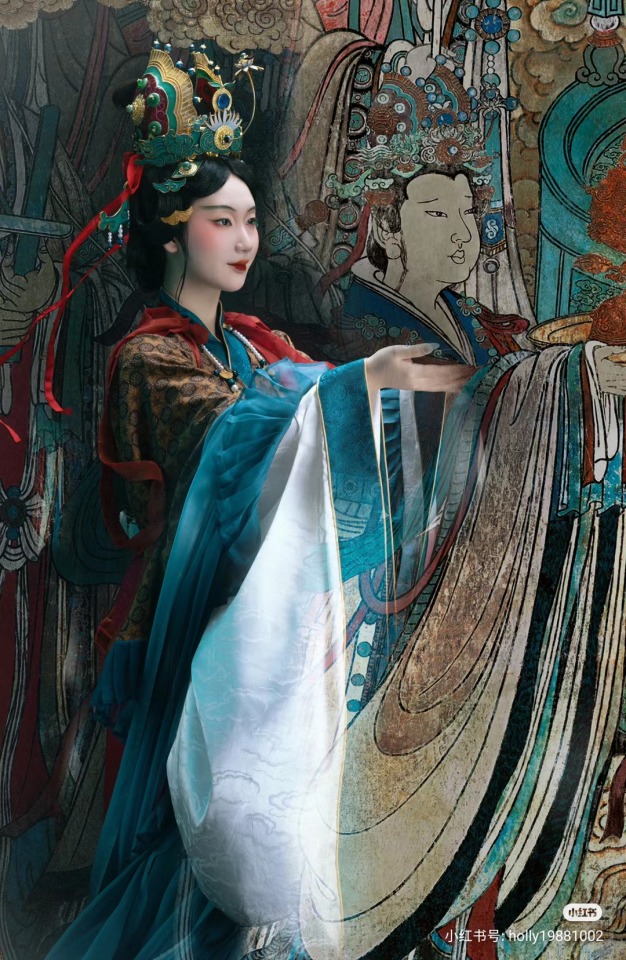
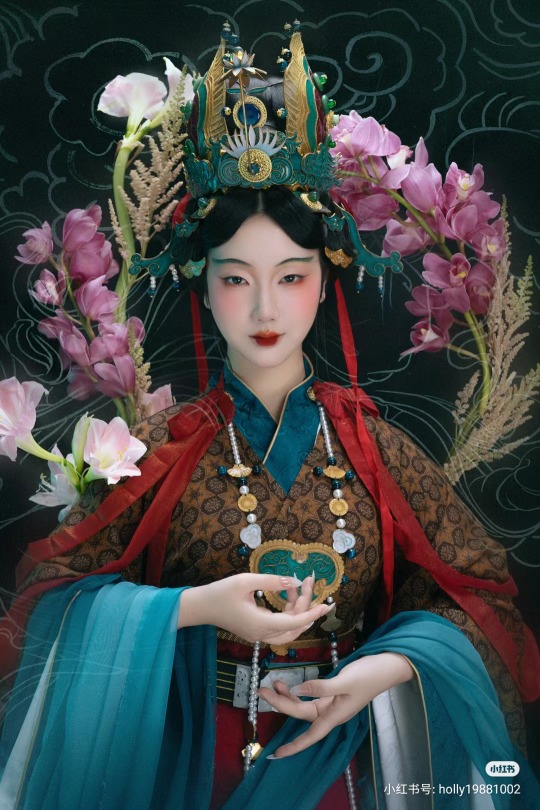

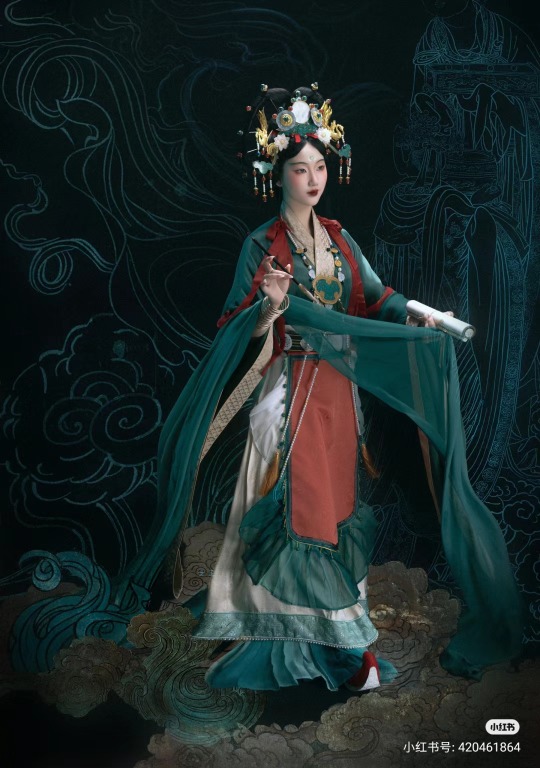



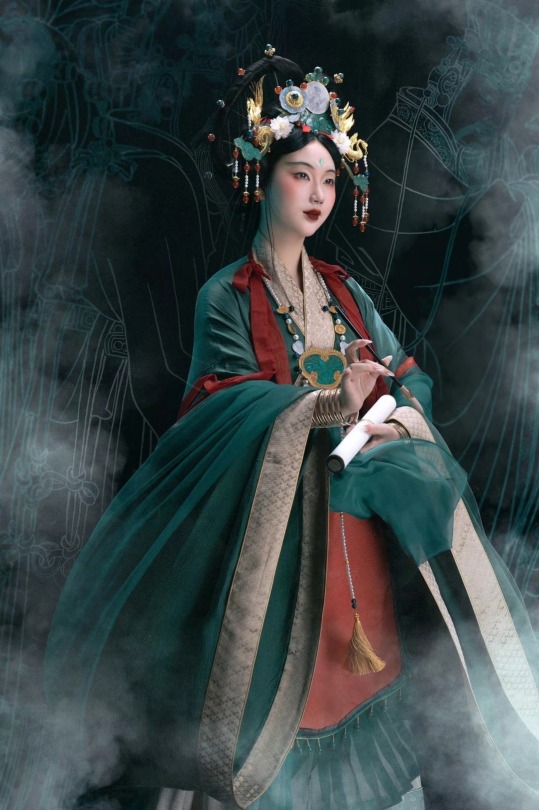

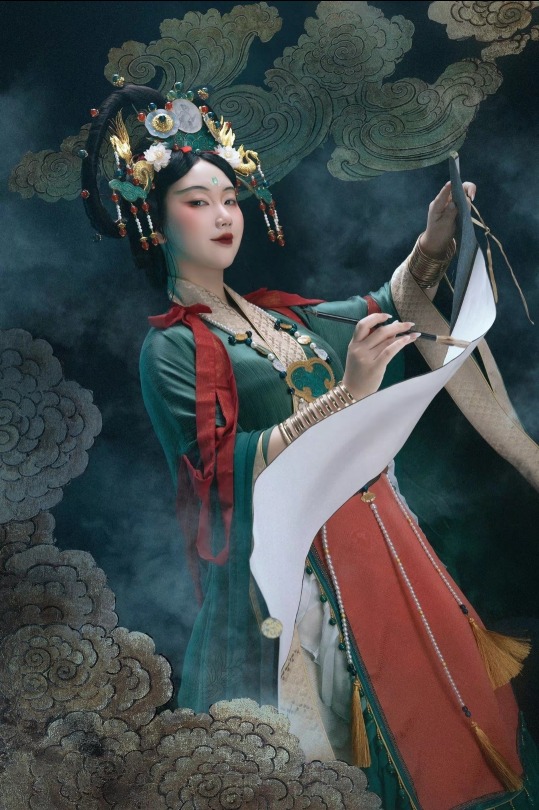

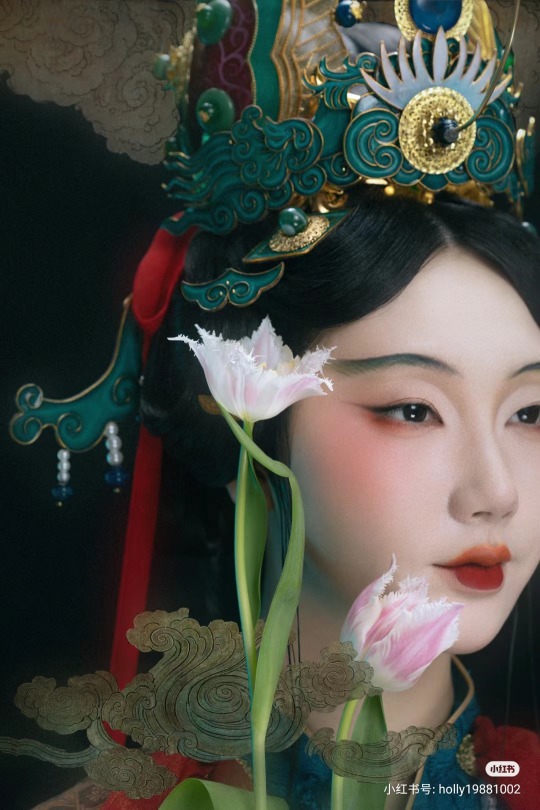

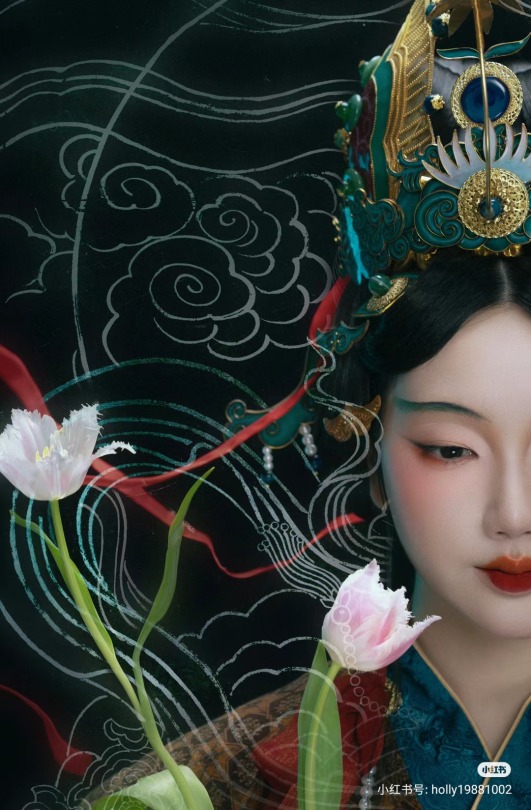


【Historical Artifacts Reference 】:
▶ China Yuan Dynasty Taoist Temple 永乐宫/Yongle Palace Mural
<水星神>:The "Statue of Water Stars God" is located among the gods on the east wall of the north wall of the Sanqing Hall of Yongle Palace. It is one of the five elements of Taoist statues of Water Stars God. According to Taoist norms, Water Stars is a female statue of a scribe wearing an ape crown. It belongs to the monkey god of the zodiac and is used as a written document.

<奉宝玉女>:The immortal attendant who presented the treasure.

————————
📸Photography post-production :@小何力
👗Hanfu:@雁鸿Aimee
💄 Makeup:百丽 (临溪摄影)
👭Model:@清音音音音
🔗 Weibo:https://weibo.com/1615560544/NDD5YEY5x
————————
#chinese hanfu#hanfu#immortal hanfu#hanfu accessories#chinese traditional clothing#hanfu_challenge#china#chinese#永乐宫/Yongle Palace#漢服#汉服#中華風#taoism#immortal#小何力#清音音音音
473 notes
·
View notes
Photo

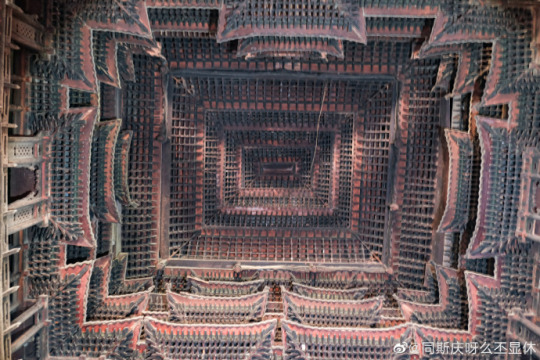
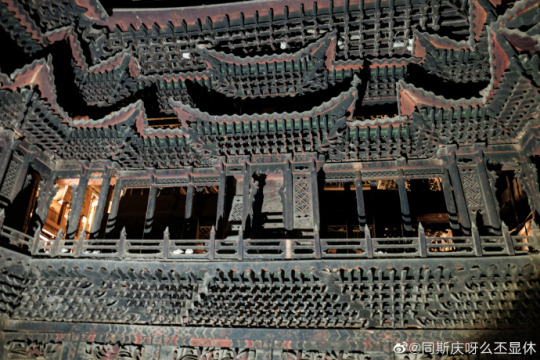

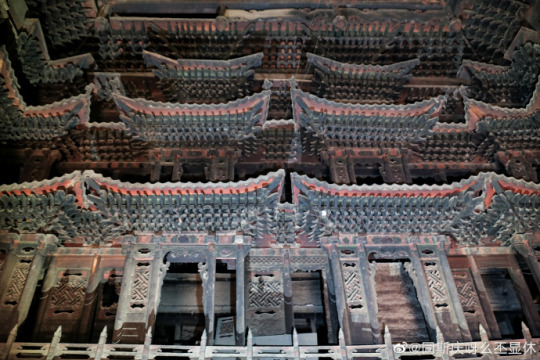
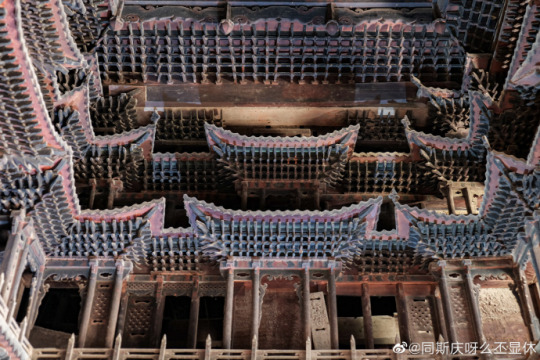
Gongshutang Temple (公輸堂) with its unforgettable cosmological ceiling. Just a small temple in the rural outback in Huxian County (戶縣), Shaanxi, in Qinan village (祁南村). The locals even barely remember its name.
The Gongshutang Temple, originally called Yuanyuantang (源遠堂), also known as Wanfotang (萬佛堂) was built in the Yongle period of the Ming Dynasty, facing south from the north. It was erected by the followers of the “Baiyang Sanhui” (白陽三會) movement to commemorate their legendary ancestor-founder Lu Ban (魯班).
From the very beginning, Gongshutang was a large-scale temple complex. Nowadays only the main hall exists with a building area of 106 square meters. Referring to the folk religion, the temple is conceived to worship the amalgam of the Taoist and Buddhist pantheons.
Photo: ©同斯庆呀么丕显休
#ancient china#chinese culture#chinese architecture#ming dynasty#yongle period#ming#wooden architecture#wooden buildings#wooden temple#old china#taoism#taoist#buddhism#buddhist#chinese folk religion#chinese temple#公输堂#temple ceiling#temple architecture
348 notes
·
View notes
Text



Sword (jian) and scabbard, probably made in the court workshops of the Yongle Ming Emperor. Chinese, Ming Dynasty, early 15th century.
The hilt is of gilt iron. The grip is of gibbous rectangular section, punched with small circles to imitate ray skin. Down the centre of the front is a raised spine bordered by tiny flames at either side.
The pommel is of trilobed form, bordered at the front and rear by bands of golden scrolls. The front panel of the pommel is chiselled and fretted with a dragon surrounded by interlacing flames, with triple claws on each paw. At the rear of the pommel, the central panel is decorated with a monster mask (kirtimukha), surmounted by a silvered crescent and golden disc, and with human hands, also surrounded by flames. At either side of the pommel are the Eight Buddhist Emblems of Good Augury (ba jixiang): the wheel of law (dharma), the standard, the treasure jar, the pair of fish, the endless knot, the lotus, the parasol and the conch shell of victory.
The guard is embossed in the form of a monster mask, surmounted by a silvered crescent and golden disc. The face is punched with circles, the canine teeth silvered, the eyebrows and whiskers chiselled and gilt. The horns are in the form of crab claws. At either side of the mouth is a paw in the form of a human hand. The head is surrounded by scrolling curls of mane. The rear of the guard is rendered as the underside of the jaw, with a set of silvered teeth, and a narrow beard running into a throat of alternate silvered and gilt bands.
The blade is associated but is probably a later replacement of Tibetan manufacture. It is formed of pattern-welded steel, of diamond section, straight and double edged. The pattern welding produces a mirrored pattern of addorsed crescents at either side of the medial ridge. The tang is of rectangular section, tapering towards the pommel, with a large expanded peg-hole towards the end. The edges have been ground and sharpened.
The scabbard is of wood covered in green stained leather and bound with gilt iron. At the throat is a V-shaped cut out at the front for seating the blade, and a scalloped cut-out in the leather to accommodate the guard. The throat retains traces of the scarlet silk with which it was lined. The iron binding comprises a long, facetted strip running all the way round either edge.
There are eight transverse bands at the rear, the uppermost and fourth of which are wider than the others, and extend round the front of the scabbard forming suspension loops. The edging strip has four main facets, with an additional narow facet at either side. It is decorated with scrollwork in gold running down each facet, and matching that on the pommel. At either end is a set of three golden lotus leaves.
The front panel is divided stylistically into upper and lower sections. The upper section is decorated quite plainly; a series of five beaded transverse bands divide it into six sections, and there are three vertical bands of fretted four-petalled rosettes in each section.
At the throat is a cusped section with a beaded border, below which is a band of flames. The ornate lower section has six smaller segments, divided vertically and horizontally by fretted 'vajras', each with a 'yinyang' symbol in the central knop. The half-'vajras' at either side emanate from the heads of lions, and the vertical bands of decoration at either side are formed by rows of flames.
Above and in the middle of these divisions are two square panels, each containing a cusped lozenge shaped central medallion, the corners decorated with interlacing flames. The uppermost of these two panels contains two dragons intertwined amid flames, with the heads at top right and bottom left; the lower has two similar dragons, with thicker bodies, and with their heads confronted at the left and right.
The chape section is decorated with a large panel of interlacing flames, within a beaded border. At the rear of the scabbard, the upper band is decorated with alternating gold and silver scrollwork, and terminates in a rosette at the front. The next two narrow bands are decorated with silver scrollwork only. The fourth is decorated at the rear like the top one, but is extended accross the front in a broad band; it is chiselled with four medallions decorated with gilt characters on silver grounds, and surrounded by interlacing gilt flames. The three lower bands are decorated in gold scrollwork.
The rear chape panel has a small, flat piece of rather coarse, scrolling interlace at the bottom, and narrow bands of petalled rosettes at either side.
A four character Tibetan inscription on the lower suspension loop reads 'khi'u ga ral gri' (honourific sharp sword).
China, 15th century (About 1420),
Leather, Ferrous, Gold, Silver, Semi-precious stone, Silk, Wood,
Dimensions:
Blade Length: 30 inches
Overall (sword) Length: 35 inches
Courtesy: Royal Armouries Museum, Leeds, United Kingdom
Sword (jian) and scabbard, probably made in the court workshops of the Yongle Ming Emperor. Chinese, Ming Dynasty, early 15th century.
#art#history#design#style#sculpture#silver#gold#semi precious stones#royal armouries#leeds#silk#wood#sword#jian#scabbard#ming#15th century#yongle#imperial
60 notes
·
View notes
Text
why did they name her linkle by the way
6 notes
·
View notes
Text
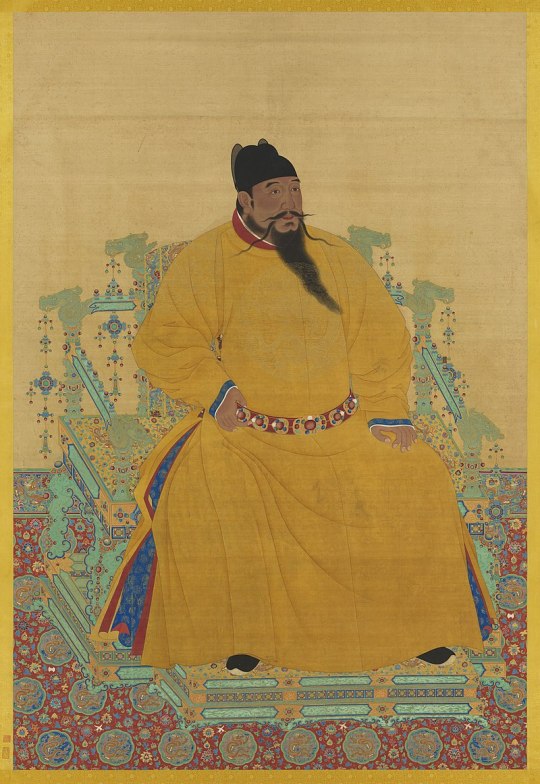
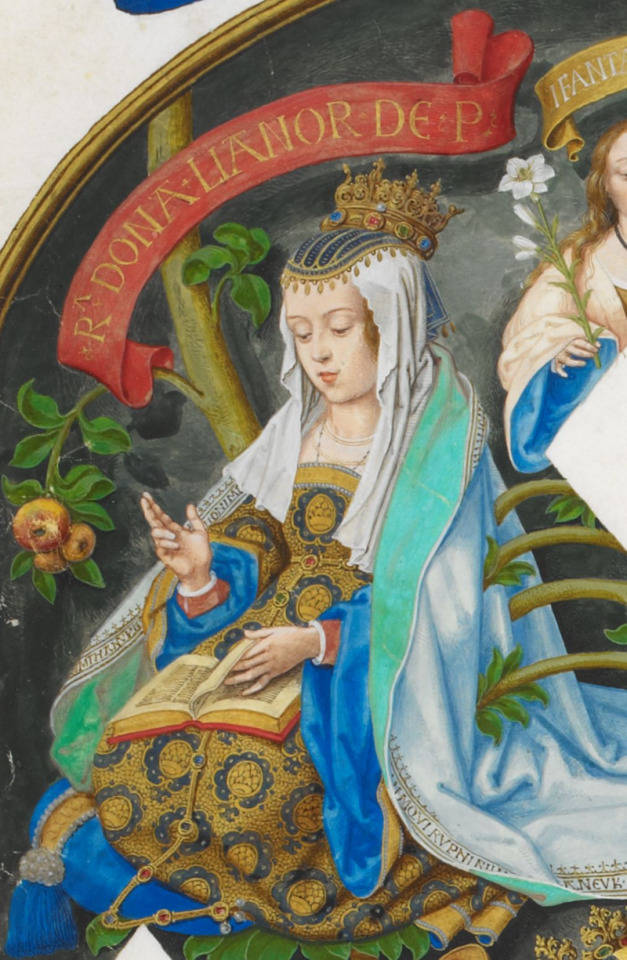
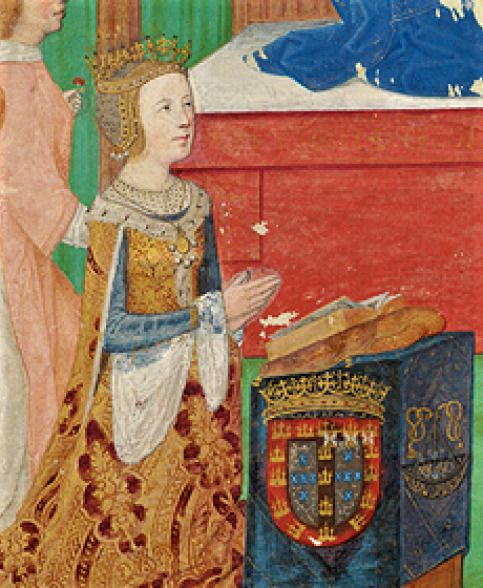
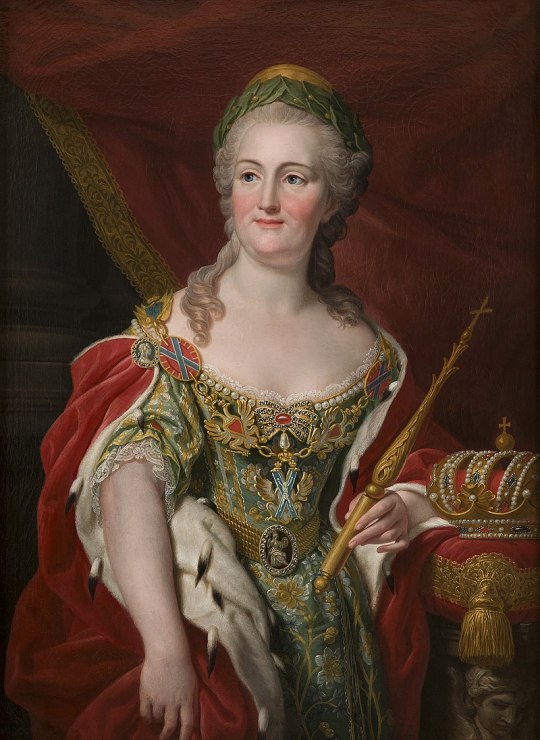
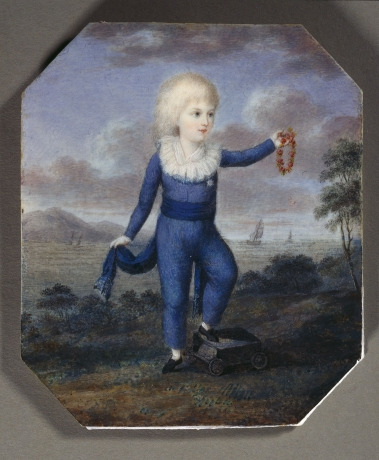


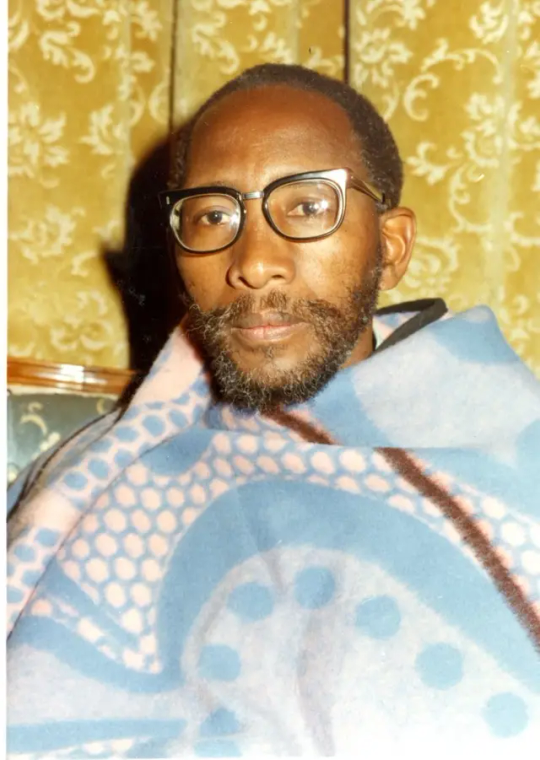

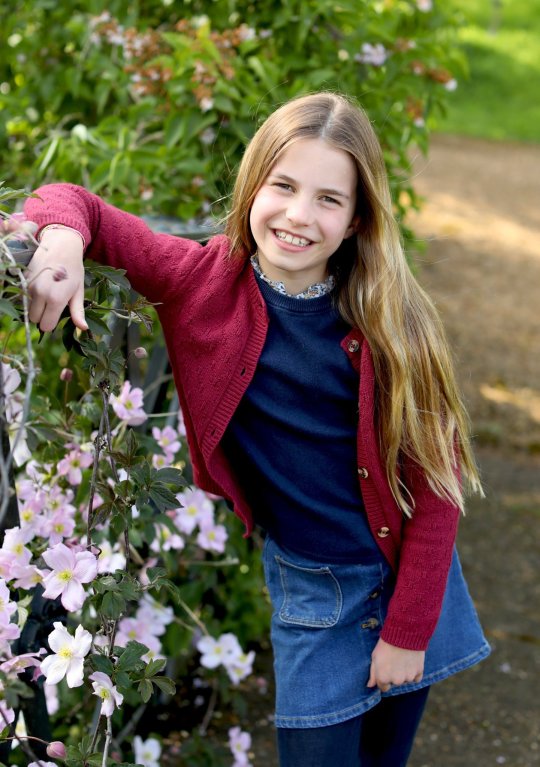
Royal Birthdays for today, May 2nd:
Yongle Emperor, Emperor of China, 1360
Eleanor of Aragon, Queen of Portugal, 1402
Eleanor of Viseu, Queen of Portugal, 1458
Catherine II, Empress and Autocrat of All the Russias, 1729
Alberto, Prince of Naples and Sicily, 1792
Helen of Greece and Denmark, Queen Mother of Romania,1896
Faisal II, King of Iraq, 1935
Moshoeshoe II, King of Lesotho, 1938
Nathalie of Sayn-Wittgenstein-Berleburg, German Princess, 1975
Charlotte of Wales, British Princess, 2015
#princess charlotte#eleanor of aragon#eleanor of viseu#catherine ii#catherine the great#helen of greece and denmark#yongle emperor#prince alberto#faisal ii#Moshoeshoe II#Nathalie of Sayn-Wittgenstein-Berleburg#royal birthdays#long live the queue
6 notes
·
View notes
Note
Yongle from Civilization 6
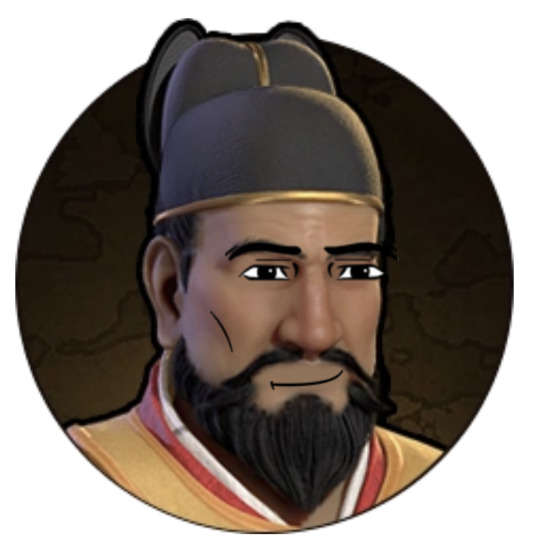
8 notes
·
View notes
Text









Artist I Like Series
Chen Yongle 1944 - ???? a Chinese painter and printmaker.
#Chen Yongle#painter#printmaker#20th century art#21st century art#contemporary art#chinese#male artist#artist I like#art history#art#art inspo
40 notes
·
View notes
Text
Really obsessed with this post from the official civ insta

5 notes
·
View notes
Text

Chen Yongle
Coloured Clouds
1997
#chen yongle#modern art#woodblock print#asian art history#art history#print making#tumblrpictures#tumblrpic#tumblraesthetic#aesthetictumblr#aesthetic#chinese aesthetic#asian art#chinese prints#chinese print maker#beautiful pictures#love love this
4 notes
·
View notes
Text
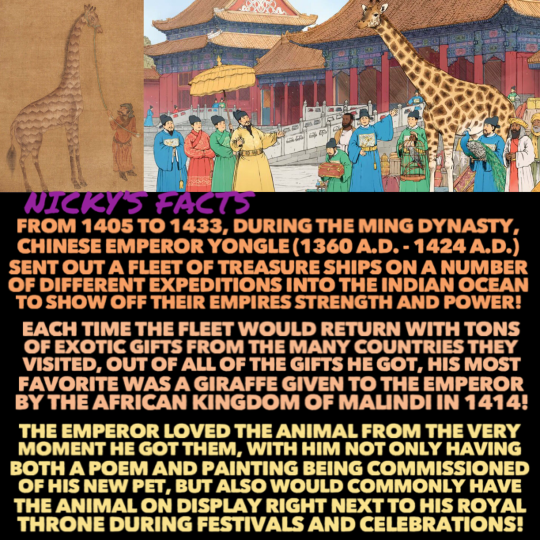
Classic example of Giraffe diplomacy, works every time!🕊
🇰🇪🦒🇨🇳
#history#giraffe#china#ming dynasty#emperor#yongle#pets#malindi#animals#chinese history#celebrations#historical figures#animal history#age of discovery#exotic#animal lover#poem#diplomacy#royalty#painting#kenya#treasure fleet#indian ocean#nickys facts
2 notes
·
View notes
Text
[Hanfu · 漢服]Chinese immortal Hanfu <西王母/Queen Mother of the West> Based On Yuan Dynasty Taoist Temple Mural<永乐宫/Yongle Palace>
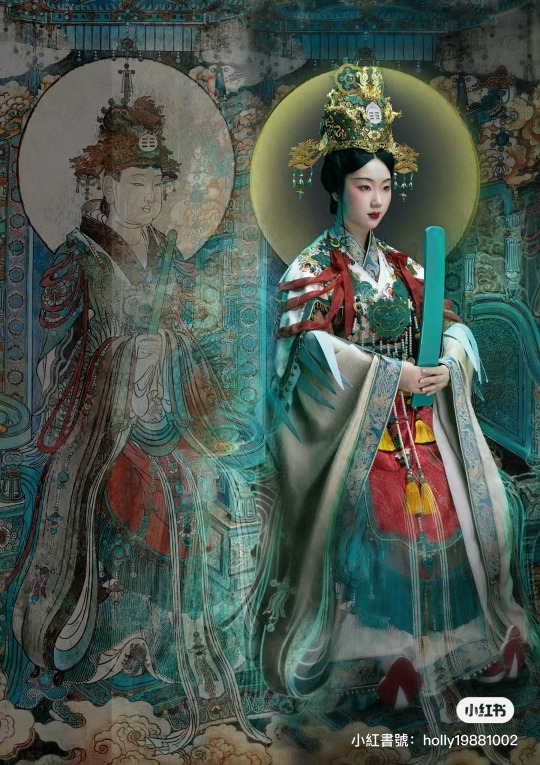
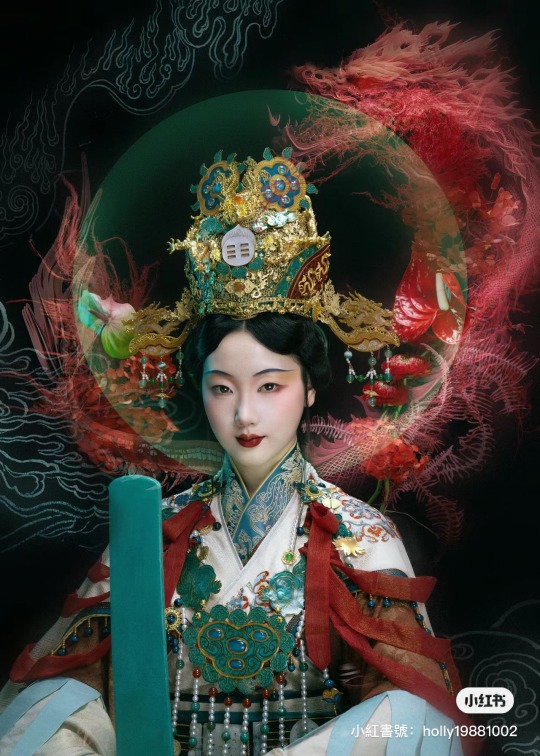
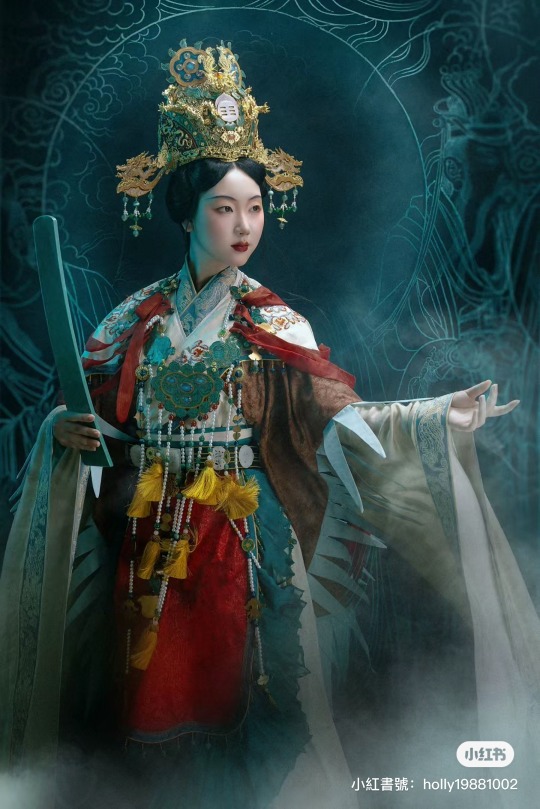
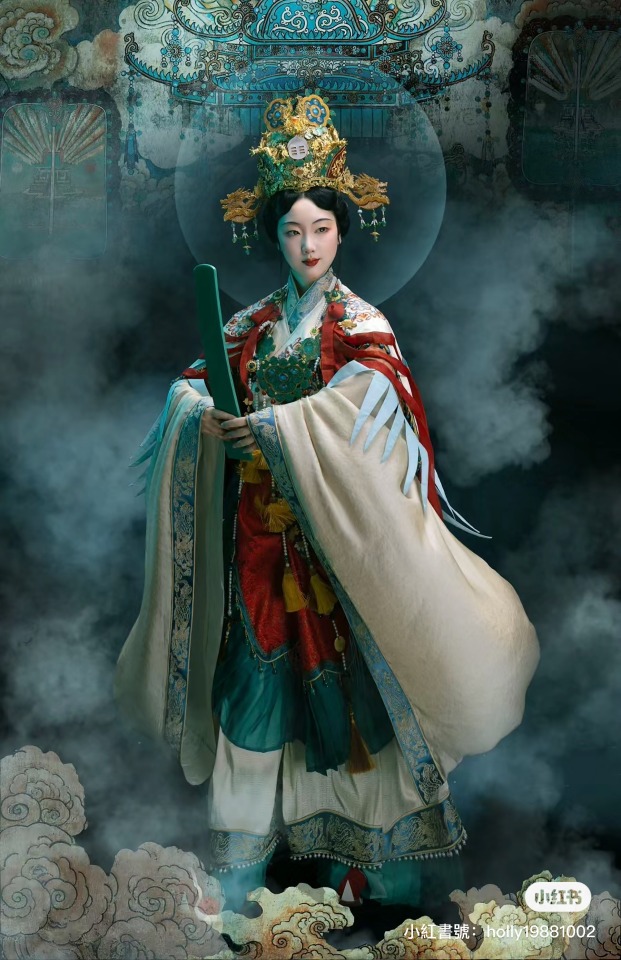
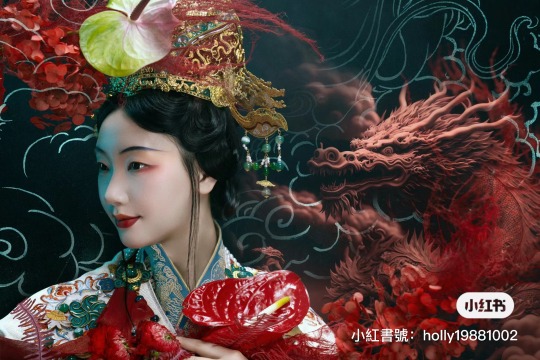
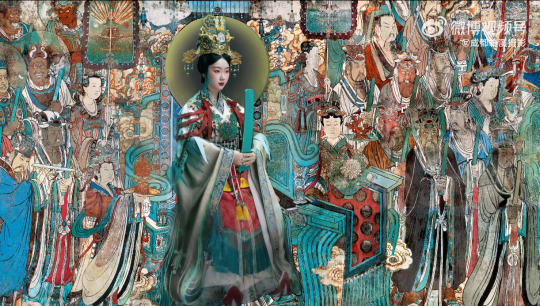
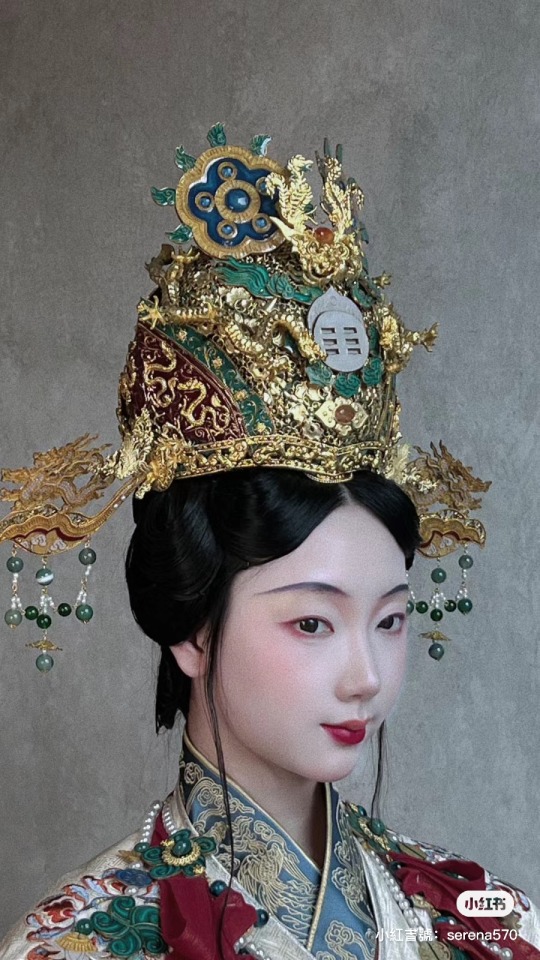
【Historical Artifacts Reference 】:
▶ China Yuan Dynasty Taoist Temple 永乐宫/Yongle Palace Mural
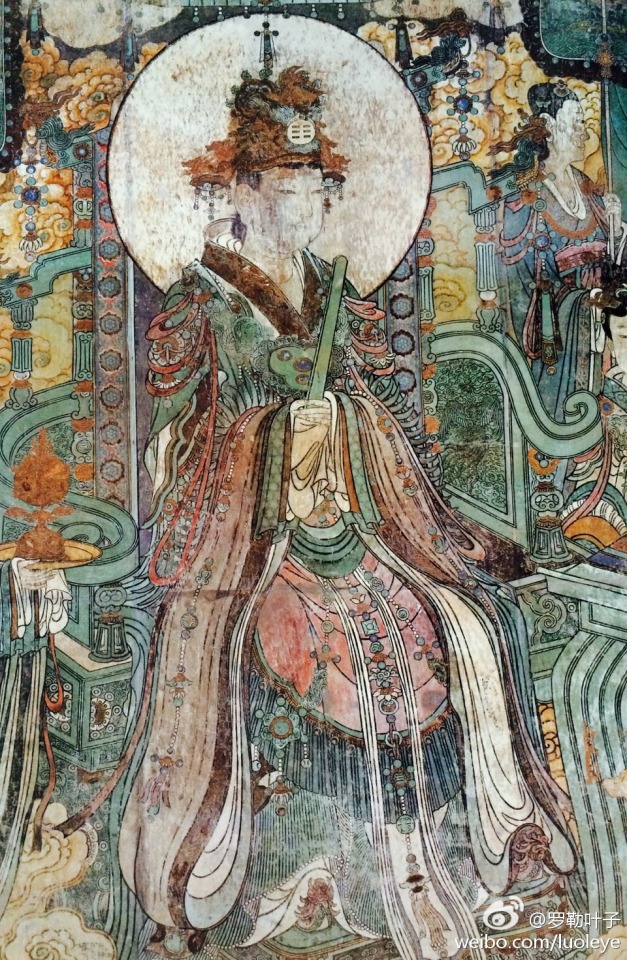
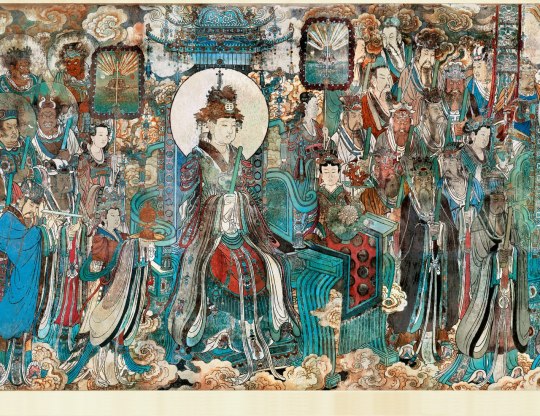
<西王母/Queen Mother of the West>
The Queen Mother of the West, known by various local names, is a mother goddess in Chinese religion and mythology, also worshipped in neighbouring Asian countries, and attested from ancient times.
The first mentions of the Queen Mother date back to the oracle bone inscriptions of the Shang dynasty (1766 – 1122 BCE). One inscription reads:
Crack-making on day IX (9th day), we divined. If we make offering to the eastern mother and the western mother, there will be approval.
Western Mother refers to an archaic divinity residing in the west. The exact nature of the Mother divinities in the Shang dynasty is unclear, but they were seen as powerful forces deserving of ritual by the people of the Shang dynasty. Originally, from the earliest known depictions of her in accounts like the Classic of Mountains and Seas during the Zhou dynasty, she was a ferocious goddess of death with the teeth of a tiger, who rules over wild beasts and sends down heavenly punishments such as pestilences. She was also mentioned as an authority ruling over other divinities such as Jiutian Xuannü, a goddess of war and sex. Other stories hold that she is a mountain goddess or a divine tigress. She is also popularly thought to have blessed the Eight Immortals with their supernatural abilities.
After her integration into the Taoist pantheon, she gradually took on associations with other aspects, such as immortality, as well.
The Queen Mother of the West is most often depicted holding court within her palace on the mythological Mount Kunlun, usually supposed to be in western China (a modern Mount Kunlun is named after this). Her palace is believed to be a perfect and complete paradise, where it was used as a meeting place for the deities and a cosmic pillar where communications between deities and humans were possible.At her palace she was surrounded by a female retinue of prominent goddesses and spiritual attendants. One of her symbols is the Big Dipper.
Although not definite there are many beliefs that her garden had a special orchard of longevity peaches which would ripen once every three thousand years,others believe though that her court on Mount Kunlun was nearby to the orchard of the Peaches of Immortality. No matter where the peaches were located, the Queen Mother of the West is widely known for serving peaches to her guests, which would then make them immortal. She normally wears a distinctive headdress with the Peaches of Immortality suspended from it.
Flourishing parasols, we reach the chronograms' extremity; Riding on the mist, I wander to Lofty Whirlwind Peak. The Lady of the Supreme Primordial descends through jade interior doors; The Queen Mother opens her Blue-gem Palace. Celestial people—What a Crowd! A lofty meeting inside the Cyan Audience Hall. Arrayed Attendants perform Cloud Songs; Realized intonations fill the Grand Empty Space. Every thousand years, her purple crabapple ripens; Every four kalpas, her numinous melon produces abundantly. This music differs from that at the feast in the wilderness— So convivial, and certainly infinite.— Wu Yun (Complete Tang Poems 1967, line 4942)
One of the earliest written references to the Queen Mother comes from the writings of the Taoist writer Zhuangzi (c. 4th century BCE):
The Queen Mother of the West obtained it [the Dao]... ...and took up her seat at Shao kuang. No one knows her beginning; no one knows her end.
Zhuangzi describes the Queen Mother as one of the highest of the deities, meaning she had gained immortality and celestial powers. Zhuangzi also states that Xiwangmu is seated upon a spiritual western mountain range, suggesting she is connected to not only the heavens, but also to the west.
Legendary encounters
In Tu Kuang-ting's text, he includes narrative accounts of the Queen Mother's encounters with legendary Chinese heroes. One such account narrates an encounter between the Queen Mother and Laozi (Lord Lao):
"In the 25th year of King Chao of the Chou dynasty (1028 BCE) …" "…Lord Lao and the realized person Yin Hsi went traveling…" "…on their behalf, the Queen Mother of the West explicated the Scripture of Constant Purity and Quiet."
In this account, the Queen Mother plays the role of Laozi's superior and is credited with the ultimate authorship of the Dao De Jing. This dichotomy of the Queen Mother as the superior is a characteristic of Shangqing Taoism, a goddess worshiping sect of Taoism of which Tu Kuang-ting was a master. There is also an account of a meeting between the Queen Mother and Laozi in Tang poetry.[18] This account however, being of traditional Taoist thought, has the Queen Mother taking an inferior role to Laozi, calling him "Primordial Lord" (the title of his highest manifestation) and pays homage to the sage.

<China Han Dynasty stone-relief showing 西王母/Queen Mother of the West from Sichuan,China>
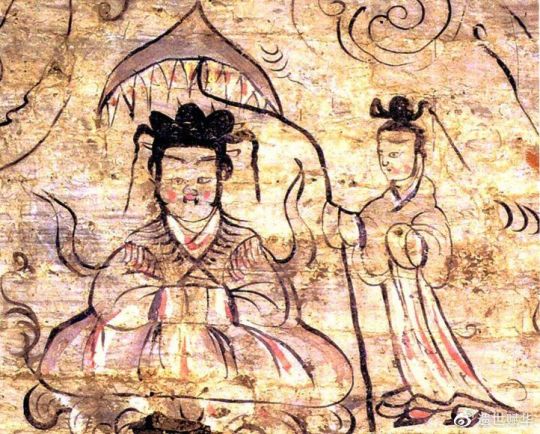
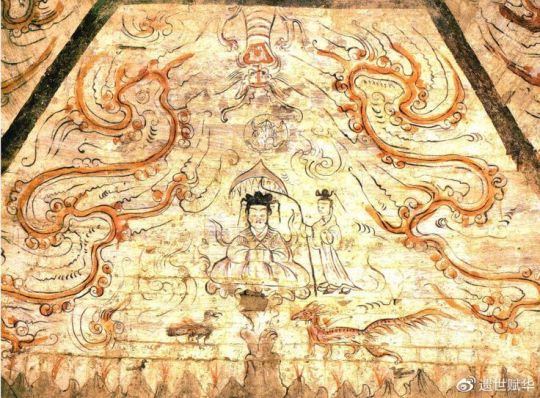
<China Wei and Jin Dynasties Mural showing 西王母/Queen Mother of the West>
————————
📸Photography post-production :@小何力
👗Hanfu & 👑Crown:@雁鸿Aimee
💄 Makeup:百丽 (临溪摄影)
👭Model:@清音音音音
🔗 Weibo:https://weibo.com/1648616372/O2R5bpBud
————————
#chinese hanfu#immortal hanfu#西王母/Queen Mother of the West#Chinese mythology#hanfu#hanfu accessories#hanfu_challenge#chinese traditional clothing#china#chinese#chinese history#china history#漢服#汉服#中華風#小何力#雁鸿Aimee#永乐宫/Yongle Palace
304 notes
·
View notes
Text

Hall of Heavenly Favours, Tomb of Emperir Yongle, Changling, Ming Tombs, Beijing
German vintage postcard
#beijing#yongle#briefkaart#photography#vintage#tarjeta#postkaart#postal#hall#emperir#photo#postcard#ming tombs#historic#carte postale#changling#heavenly#favours#ephemera#german#tomb#tombs#emperir yongle#sepia#ansichtskarte#postkarte#ming
0 notes
Text

Steam is killing me here
0 notes
Photo
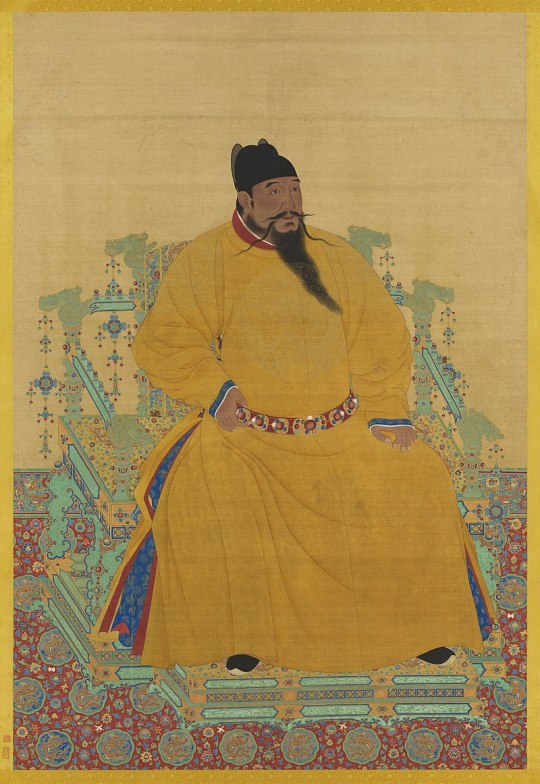

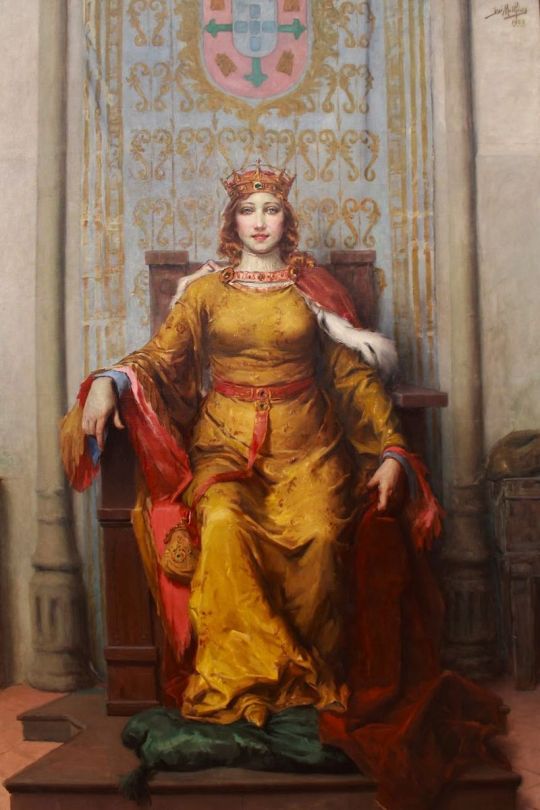

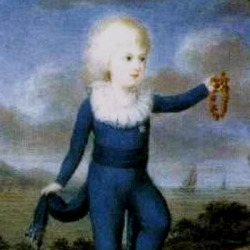

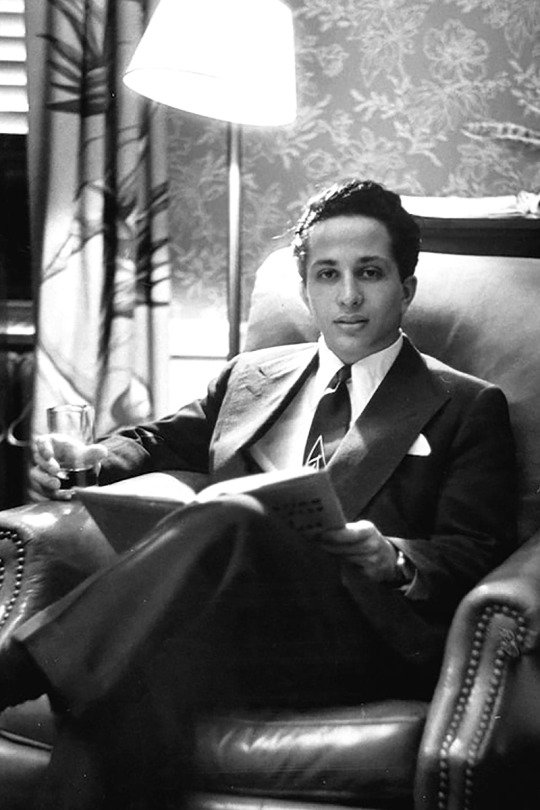



Royal Birthdays for today, May 2nd:
Yongle Emperor, Emperor of China, 1360
Eleanor of Aragon, Queen of Portugal, 1402
Eleanor of Viseu, Queen of Portugal, 1458
Catherine II, Empress and Autocrat of All the Russias, 1729
Alberto, Prince of Naples and Sicily, 1792
Helen of Greece and Denmark, Queen Mother of Romania,1896
Faisal II, King of Iraq, 1935
Moshoeshoe II, King of Lesotho, 1938
Nathalie of Sayn-Wittgenstein-Berleburg, German Princess, 1975
Charlotte of Wales, British Princess, 2015
#princess charlotte#catherine ii#eleanor of aragon#eleanor of viseu#prince alberto#helen of greece and denmark#yongle emperor#faisal ii#Moshoeshoe II#Nathalie of Sayn-Wittgenstein-Berleburg#royal birthdays#long live the queue
13 notes
·
View notes